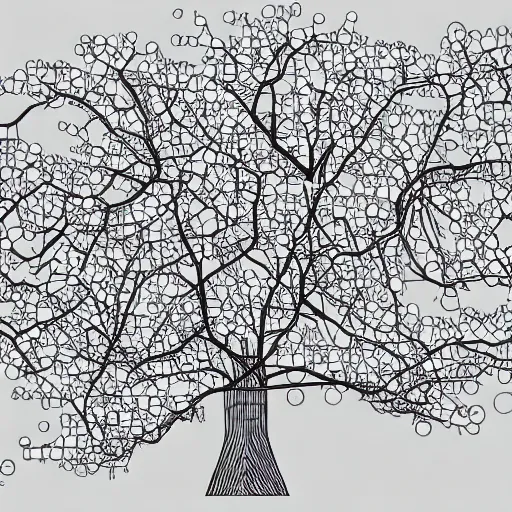
For some time now, the concept of first principle knowledge building and thinking of knowledge as a semantic tree that requires a strong foundation and roots from which to build abstractions have been widely spread by creditable individuals such as Elon Musk. While this model of information building is very powerful and healthy for having a deep understanding of one’s respective field or fields as it may be, it might also be a bit stifling for beginners, experts, engineers or adventures and valley crossers, who stride the bounds between fields and combine abstractions from multiple different concepts.

The problem with the knowledge tree is something that can be easily illustrated by taking a look at current schooling models. Right now, education is just a combination of classes without purpose. We “learn” how certain things work to a deep level, even at the college stage, but we don’t retain much of or value the information enough because of the disconnect in knowing applications or knowing how these deep fields intersect. We aren’t left to freely explore, to let knowledge guide us, to self-learn and build useful maps of knowledge we actually care about. We just end up building multiple disconnected and fading knowledge trees which don’t allow for intersection or creative thinking, something that is sorely lacking in the world today.
But how do we understand things enough to know where our gaps are and what areas are interesting without endlessly learning fundamentals?
I write this today, not to rail against currently purported models of learning and their downsides for creative and inclusive work, but to instead spread a new model of information gathering and thinking. It is a more free, unbounded form of the knowledge tree I like to call the knowledge graph. It makes it so that we can learn things breadth-first, without firm bases first, and go deeper as insight and inspiration guide us. It lets us stride between fields, gives us room to develop interests in others, mining for surface-level concepts and abstractions which might be applicable and combined with others for insights which would have been lost in the land of rigid Depth First Learning in the knowledge tree.
And how do we motivate fundamentals? Like Jon Carmack and probably other very successful people say, to be great in a field, you have to learn to learn deeply. Fundamentals are still very important and can contain marvellous insights and room for exploit that can totally change our understanding. These important nodes should also be mined. But how do we motivate it in the Breadth First Learning knowledge graph? By using the T-shaped model.
It has long been known that the best way to be very successful in a field is to have a T-shaped mindset. This means knowing various things about certain fields and having substantial knowledge of surrounding fields while having very in-depth knowledge of one’s chosen field. By having large amounts of interest in one field, we find the motivation to mine its fundamentals without jeopardizing conceptual knowledge of other fields using the knowledge graph method.
The knowledge graph, while field agnostic, is best suited for engineers and people in multi-disciplinary fields who gain experience by problem-solving. This can be in the physical, product sense of creating something new or improving some parts, or it could be in the academic sense of carrying out research and making conclusions. Nevertheless, the knowledge graph allows us to find motivation for what to mine/learn through learning about different topics when problem-solving to the depth that is sufficient for that topic instead of learning deeper level things that do not reflect in the problem being handled. Those hard problems will come later.
Some properties of the knowledge graph are:
-
Ability to learn and traverse freely
-
Strengthen knowledge through intersections of fields and concepts.
-
No restriction in linking distant nodes ( no rigid ordering of knowledge nodes and concepts)
-
Have the interest and precursory knowledge to easily jump into fundamentals when needed
-
Building associative contextual knowledge that allows field intersection and broader thinking
(hill climbers vs valley crossers) → from this book https://www.goodreads.com/book/show/51470009-teach-yourself-physics
Hill climbers take the DFS approach, learning all they can about one field without having a birds-eye view of others, they miss the insights in the valleys. The valley crossers adventure around with interest, discovering things the unaware hill climbers miss.